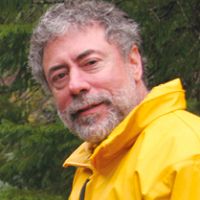Grant et al. 2012
Critical Zone Observatory Steering Committee Report, June, 25 2012
Grant, G., Firestone, M. and Derry, L. (2012)
Critical Zone Observatory Annual Meeting, May 29 to June 1, 2012, San Juan, Puerto Rico National
-
National, ADVISORY BOARD
-
Eel, INVESTIGATOR
-
National, Shale Hills, INVESTIGATOR, COLLABORATOR
Abstract
Background
The national Critical Zone Observatory (CZO) meeting was held in San Juan, Puerto Rico on May 29-June 1, 2012. Hosted by the Luquillo CZO, the meeting included two days of discussions with participation from PIs representing all six sites, plus representatives from the National Science Foundation (NSF) and the Steering Committee, and a day-long field trip to the Luquillo field sites that included a larger group of researchers and graduate students. The three members of the Steering Committee attending and principal authors of this report were L. Derry, M. Firestone, and G. Grant.
Taking stock: where are we now?
The CZO program is at an important juncture as a national scientific program and initiative. The first cohort of sites (Sierra, Boulder, Shale Hills) are finishing their fifth year of funding and have applied to NSF for a one-year non-competitive accomplishment-based renewal, while the second cohort (Luquillo, Jemez/Santa Catalina, and Cristina River) are finishing their third year and have been asked to spend their remaining allocation (total for both years 4 and 5) in year four. These changes were announced in February shortly before the originally scheduled renewal proposals for Cohort 1 sites were due. All sites have been informed that there will be a new open competition for the CZOs, with the solicitation scheduled to be released in FY 12, and proposals due mid-FY 13 with funding for the successful sites to begin in FY14; NSF leadership has indicated that 8 sites will be funded under this solicitation. Moreover, NSF has indicated that they intend to fund a national CZO office, with timing of the solicitation unspecified but likely in the near future.
These recent developments, particularly at a time of overall Federal budget decline, signify a strengthening of NSF’s commitment and support of the CZO program. Despite the difficulties and challenges experienced by the Cohort 1 sites as they were forced to change course on short notice, the long-range prospects for the program are quite positive, and reflect optimism and expectations on the part of NSF that the CZOs represent a flagship investment by Earth Sciences (EAR) that will pay-off in important, transformative, and integrated science. The Committee shares this belief, and commends NSF leadership for their ongoing support of the CZO program.
With increased funding comes increased responsibilities, however, and this expansion of the CZO network to 8 sites, plus other related developments, poses new challenges for the network. Our discussions and this report focus primarily on laying out these challenges and our suggestions as to how best to meet them, which the Committee believes will require something more than business as usual.
Citation
Grant, G., Firestone, M. and Derry, L. (2012): Critical Zone Observatory Steering Committee Report, June, 25 2012. Critical Zone Observatory Annual Meeting, May 29 to June 1, 2012, San Juan, Puerto Rico.
 This Paper/Book acknowledges NSF CZO grant support.
This Paper/Book acknowledges NSF CZO grant support.
Explore Further



